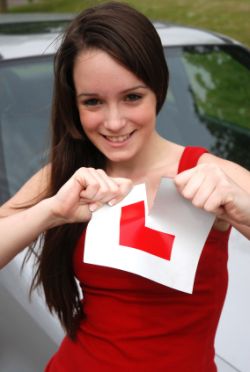Reversing Exercises in the driving test
There are three reversing exercises that you could be tested on in the driving practical test.
You will be asked to perform two out of these three so that the person undertaking your test (the examiner) can ascertain your ability in handling the car during reversing manouevres.
The three exercises that two will be chosen from are listed below:
- reverse parking
- turning in the road
- reversing around a corner
You will also learn how to do an emergency stop during your driving lessons; it is possible but not mandatory that you will be required to perform an emergency stop during your driving test.
As with your lessons, you will be told by the examiner what route you should follow, and in fact you should try to drive in the way that you were taught by your instructor: don't change your approach for the examiner, and don't be too anxious - if you make a mistake try not to let it affect you. You are allowed up to 15 faults (serious or dangerous faults automatically lead to failure).
This means that you could actually have no minor errors (driving faults) but have one major error (serious) and actually fail your test; this is because it is deemed the sort of mistake that means you have not performed at a safe level whereas minor faults need to be corrected but are not serious enough by themselves to mean that you are an unsafe driver.
Related Articles...
Before Learning to Drive
The minimum age at which you are allowed to learn to drive a car on public roads is 17. As you probably know, you are not allowed to drive legally on your own until you pass your test. This means...
What causes accidents: tailgating
Driving too close to a vehicle is dangerous for the very simple reason that you have too little time to react should something unexpected happen. And when you consider how many road journeys there...
What causes accidents: speed
There is a well known saying from safety campaigns which simply says that "speed kills".
Although many people think that you have to be travelling really quickly in order to make an impact...
Vehicle Test Certificate Explained
The MOT test is no doubt something you have heard of before, but you don't pay that much interest to what it actually is before you are a car driver and faced with the prospect of requiring such a...
Your vehicle and driving
There is a lot to take in when you are learning to drive and when you are preparing for the driving theory test. Whilst a lot of it is common sense there is a considerable amount of information you...
Speed limits on motorways
The speed limits on the motorway are something that you will no doubt be aware of for cars, but is the limit the same for a motorbike? And what about if you are bus or a coach driver?
Another...
The automatic transmission explained
Whilst the automatic transmission system is very clever, you still need to have some control over it, and this is where the selector lever comes into play, which is in the place that you would have...
Dealing with nerves
Learning to drive can make people nervous, and even if you are a confident
driver then you may get nervous before the driving test itself. If this
happens to you, then don't worry. It is only...
What causes accidents: overtaking
When you overtake a vehicle, there are often many things to consider.
First of all you need to ensure that it is, as far as you are aware, safe to do so. Therefore don't overtake close to...
Using emergency telephones
There are emergency telephones along motorways. There are telephones that occur roughly once per mile along the motorway which are connected to the emergency services.
There are also blue and...
Back to home page of driving theory test questions

